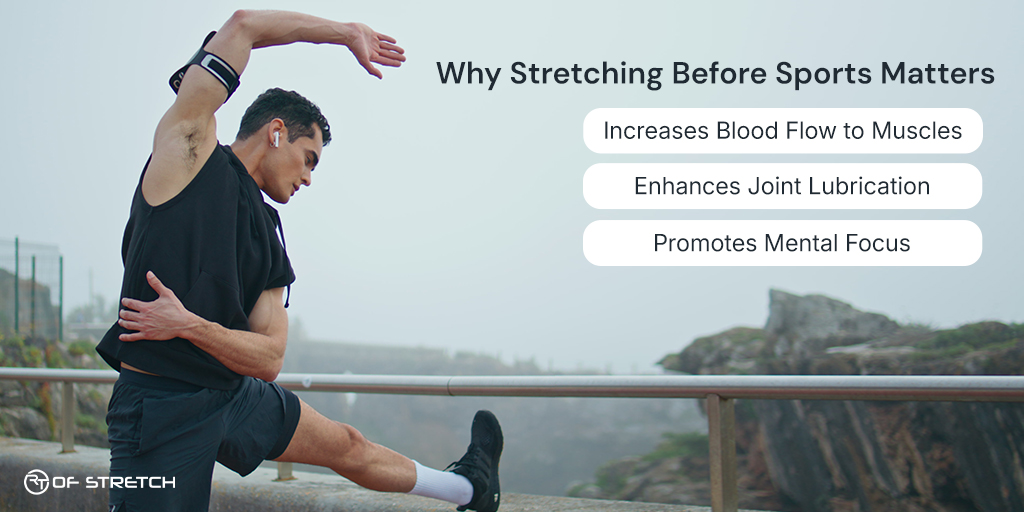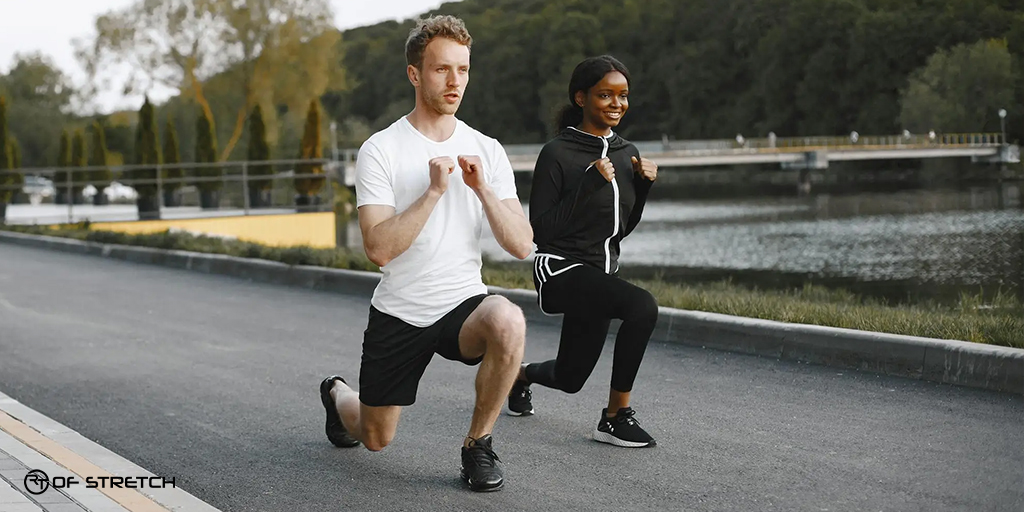The Importance of Stretching Before Athletes Play Sports
Athletes often push their bodies to the limit during games and practices. Without proper preparation, muscles and joints can become strained or injured. The problem? Jumping straight into high-intensity activities without warming up. The importance of stretching before physical activity is undeniable. Stretching warms up the muscles, reduces stiffness, and increases range of motion, which lowers the risk of injury and enhances performance.
Studies show that a pre-sport stretching for athletes improves flexibility, increases circulation, and prevents injuries. By loosening tight muscles and warming up joints, athletes are better prepared to perform at their best. Below, we’ll explore why stretching is essential and how to incorporate effective techniques into your routine.
Why Stretching Before Sports Matters

Prepares the Body for Activity
Stretching before playing sports wakes up your muscles and joints. It loosens tight areas and increases flexibility, allowing you to move more freely. For student athletes, this means quicker reactions, smoother movements, and a reduced risk of pulling a muscle during explosive actions like sprinting or jumping.
Improves Performance
Flexible muscles perform better. When you stretch, you increase the range of motion in your joints, which helps you execute techniques more efficiently. Whether you’re shooting a basketball, playing as a football player, or running a marathon, stretching ensures your muscles are ready to handle the challenge.
Reduces the Risk of Injury
The last thing any athlete wants is to sit on the sidelines with an injury. Stretching reduces this risk by preparing your body for sudden, intense movements. Loosened muscles are less likely to tear, and joints with a better range of motion are less prone to sprains.
Physiological Benefits of Pre-Sport Stretching
Increases Blood Flow to Muscles
Stretching boosts circulation, sending oxygen-rich blood to your muscles. This prepares them for the physical demands of your sport. Improved blood flow also helps flush out toxins, which can reduce muscle soreness later.
Enhances Joint Lubrication
When you stretch, the movement helps lubricate your joints. This makes it easier for your body to handle quick, sharp movements during sports. Proper joint lubrication also helps prevent wear and tear, keeping you more active in the long run.
Promotes Mental Focus
Stretching isn’t just about your body—it helps your mind too. Taking a few minutes to stretch allows you to have mental clarity to prepare you for the game. It’s a chance to focus, calm any pre-game nerves, and get in the zone.
Recommended Stretching Techniques for Athletes
Understanding stretching types and techniques is crucial for athletes looking to prepare their bodies effectively. Two primary methods are:
Dynamic Stretching (Before Play)

Dynamic stretching involves active movements that warm up your body. These stretches are great for getting your blood flowing and preparing your muscles for action. Some examples include:
- Walking Lunges: Opens up your hip flexors and strengthens your legs.
- Arm Swings: Loosens your shoulders and improves upper body mobility.
- High Knees: Warms up your lower body and engages your core.
Static Stretching (Optional Post-Play)
Static stretching, where you hold a stretch for 20-30 seconds, is better suited for cool-downs. It focuses on recovery and relaxation. If you’re looking to maximize the benefits, a stretch therapist can assist in achieving deeper and more effective stretches, ensuring proper alignment and technique. Examples include:
- Hamstring Stretch: Sit on the ground, extend one leg, and gently reach for your toes.
- Quad Stretch: Pull your foot toward your glutes while balancing on one leg to stretch the front of your thigh.
Sport-Specific Stretching Routines
Different sports use different muscles, so stretching routines should match the demands of your activity:
- For Runners: Focus on your hamstrings, calves, and hip flexors. Add stretches like downward dog and calf raises to improve lower-body flexibility.
- For Basketball Players: Stretch your shoulders, quads, and ankles. Dynamic stretches like arm circles and side lunges work well here.
- For Tennis Players: Stretch your wrists, shoulders, and back to prepare for repetitive swings and quick turns.
Incorporating sport-specific stretches ensures that the muscles you’ll rely on most are ready to perform.
Get the most out of your game with RT OF STRETCH!
Don’t wait for tight muscles to slow you down.Their assisted stretching helps athletes prepare their muscles, prevent injuries, and improve flexibility. Contact us and stay ready for every play!
FAQs
Why is stretching before sports important?
It improves flexibility, increases blood flow, boosts performance, and prevents injuries.
Should I do dynamic or static stretches before playing?
Dynamic stretches are better before sports; static stretches are ideal after.
How long should I stretch before sports?
Spend 5-10 minutes stretching, focusing on key muscle groups for your activity.